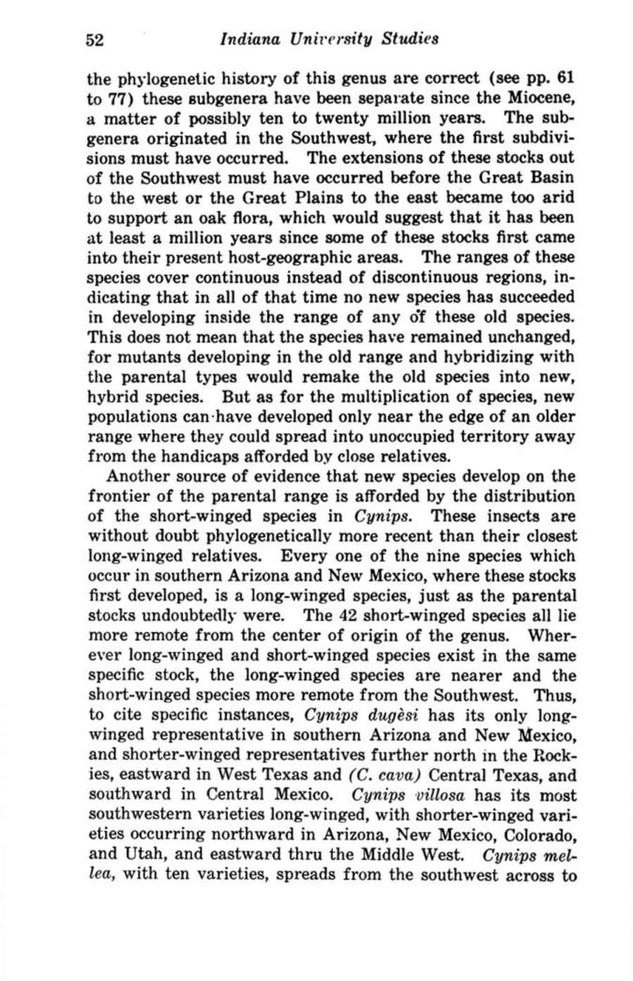the phylogenetic history of this genus are correct (see pp. 61 to 77) these subgenera have been separate since the Miocene, a matter of possibly ten to twenty million years. The subgenera originated in the Southwest, where the first subdivisions must have occurred. The extensions of these stocks out of the Southwest must have occurred before the Great Basin to the west or the Great Plains to the east became too arid to support an oak flora, which would suggest that it has been at least a million years since some of these stocks first came into their present host-geographic areas. The ranges of these species cover continuous instead of discontinuous regions, indicating that in all of that time no new species has succeeded in developing inside the range of any of these old species. This does not mean that the species have remained unchanged, for mutants developing in the old range and hybridizing with the parental types would remake the old species into new, hybrid species. But as for the multiplication of species, new populations can have developed only near the edge of an older range where they could spread into unoccupied territory away from the handicaps afforded by close relatives.
Another source of evidence that new species develop on the frontier of the parental range is afforded by the distribution of the short-winged species in Cynips. These insects are without doubt phylogenetically more recent than their closest long-winged relatives. Every one of the nine species which occur in southern Arizona and New Mexico, where these stocks first developed, is a long-winged species, just as the parental stocks undoubtedly were. The 42 short-winged species all lie more remote from the center of origin of the genus. Wherever long-winged and short-winged species exist in the same specific stock, the long-winged species are nearer and the short-winged species more remote from the Southwest. Thus, to cite specific instances, Cynips dugèsi has its only long-winged representative in southern Arizona and New Mexico, and shorter-winged representatives further north in the Rockies, eastward in West Texas and (C. cava) Central Texas, and southward in Central Mexico. Cynips villosa has its most southwestern varieties long-winged, with shorter-winged varieties occurring northward in Arizona, New Mexico, Colorado, and Utah, and eastward thru the Middle West. Cynips mellea, with ten varieties, spreads from the southwest across to
